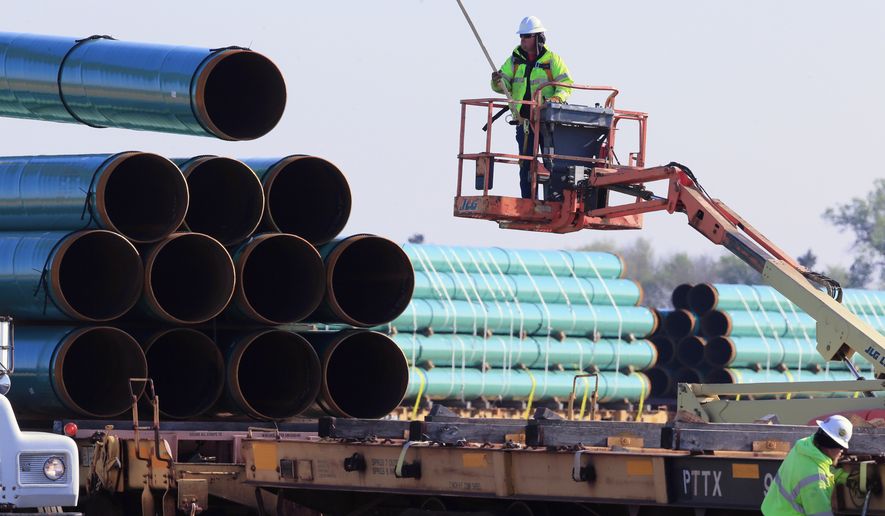After nearly a year filled with protests, delays and political machinations, the Dakota Access pipeline has finally been filled with oil.
“Oil has been placed in the Dakota Access Pipeline under Lake Oahe [in North Dakota],” said Energy Transfer Partners in a status report filed Monday in federal court. “Dakota Access is currently commissioning the full pipeline and is preparing to place the pipeline into service.”
The $3.8 billion pipeline is expected deliver oil within a few weeks from the Bakken field in North Dakota to storage and shipping facilities in Patoka, Illinois.
The company beat back several recent legal challenges filed by the Standing Rock Sioux and Cheyenne River Sioux aimed at blocking the flow of oil pending the outcome of a lawsuit, which argues that the project poses a danger to cultural sites and water quality.
Standing Rock chairman Dave Archambault II called the oil flow a “setback, and a frightening one at that,” but stressed that it could be stopped at a later date by the court if the tribe’s lawsuit prevails.
“While we are disappointed that our pleas to the court and current administration have thus far fallen on deaf ears, we remain committed to fighting the transmission of dirty fossil fuels through our territory and putting a stop to the flow of oil in this pipeline,” Mr. Archambault said in a Tuesday statement.
The 1,172-mile, four-state pipeline runs about a half-mile from the Standing Rock reservation near Cannon Ball, North Dakota. More than 99 percent of the pipeline is located on private land.
The White House became involved last year when the Obama administration delayed and then withdrew an easement for a 1,100-foot stretch on federal land under Lake Oahe as thousands of protesters gathered nearby to challenge the project.
President Trump effectively reversed the decision shortly after he took office in January by issuing a memorandum expediting the Dakota Access and Keystone XL pipelines.
The delays cost the pipeline company more than $500 million, according to an AP estimate, and the tribes have sought to intensify the financial damage by urging banks and investors to pull their funding from the project.
Norway’s DNB Bank announced Sunday that it had sold its stake in Dakota Access, estimated at $331 million, following Dutch bank ING, which sold its $121 million share of loans funding the pipeline last week, Reuters reported.
“Divestment and shareholder advocacy have been key to our fight against the Dakota Access Pipeline,” Mr. Archambault said in a Monday statement. “Hundreds of investors — ranging from institutional investors to cities to individuals — have cut ties with DAPL, but the recent announcements from banks are an especially encouraging sign that our voice is being heard.”
The pipeline company has insisted that the state-of-the-art pipeline is safe, while the U.S. Army Corps of Engineers has noted that a 30-year-old natural gas pipeline runs along the same route at Lake Oahe.
• Valerie Richardson can be reached at vrichardson@washingtontimes.com.




Please read our comment policy before commenting.